
Because of Winn-Dixie by Kate DiCamillo, Explanatory Writing Assignment (Day 2)
- Subject:
- Arts and Humanities
- Material Type:
- Homework/Assignment
- Date Added:
- 11/11/2012

Because of Winn-Dixie by Kate DiCamillo, Explanatory Writing Assignment (Day 2)

Because of Winn-Dixie by Kate DiCamillo, Reading Task

Because of Winn-Dixie by Kate DiCamillo, Vocabulary Task

Because of Winn-Dixie by Kate DiCamillo, Writing Task
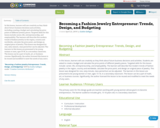
In this lesson, learners will use creativity as they think about future business decisions and activities, including creating a budget and calculating the price points of different jewelry pieces. Targeted skills for this lesson include career, life, entrepreneurship, and employability. The learners will describe five modern trends of fashion jewelry in the region, country and worldwide, calculate the price point, and design an original piece of jewelry. This lesson was designed for one, sixty-minute, class period but can be adjusted. The learners in this lesson are presumed to be young women or men, ages 15-18, in a secondary classroom. The lesson can be a part of math, art, or business courses. Significantly, the author licensed this lesson to be reused and modified to meet the needs of any users.

This is practice for students to match beginning sounds to pictures. They will practice identifying the beginning sound and then finding the matching letter. Beginning Sound Practice and adapted OER by Amberli Chastang, Creative Commons Attribution, Original work by Mallory Durden:https://oercommons.org/courseware/lesson/83255/overviewThis OER has been adapted by redesigning the PowerPoint to include more graphics, audio, examples, and instructional video. The resources for practicing beginning sounds have been included to reinforce ideas from the original work by Mallory Durden, but to provide realistic images, audio for clarification and accessibility, and a visual review of skill.
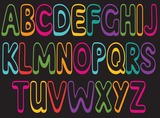
This is practice for students to match beginning sounds to pictures. They will practice identifying the beginning sound and then finding the matching letter.

Psychology courses help students to implement the chunks of the undertaken researches into their lives for the development of a metacognitive and multifaceted approach for their better self-development, identities, relationships, and decisions.

An in depth look at varying aspects that are beneficial to constructive conflict.

In this early American history lesson, students are introduced to Benjamin Banneker (1731-1806), a free Black landowner from Maryland who found notoriety as a largely self-taught surveyor, astronomer, and natural historian. A friend and neighbor of the Ellicotts, an influential family of abolitionist Quakers, Banneker became a national figure in the young republic through his popular series of almanacs, and is remembered for his scientific achievements, public opposition to slavery (including a famous exchange with Thomas Jefferson), and role in surveying the boundaries of the District of Columbia. The Woodson Center's Black History and Excellence curriculum is based on the Woodson Principles and tells the stories of Black Americans whose tenacity and resilience enabled them to overcome adversity and make invaluable contributions to our country. It also teaches character and decision-making skills that equip students to take charge of their futures. These lessons in Black American excellence are free and publicly available for all.
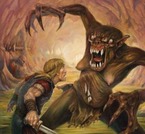
After reading Beowulf and the story of Cain and Abel, students compare and contrast Cain and Grendel. Students research and make a case for a historical figure being a descendant of Cain. After reading page 10, chapter 2, and pages 30-33 in John Gardner's Grendel, students write about the different views we have of Grendel after reading Gardner's novel. Students research and write about a character who they feel is misunderstood like Gardner's Grendel. Students write about two traits they have because of the experiences they had in life, just like Grendel is the way he is in Gardner's novel because of his experiences. Students use MLA format for their works cited page and in-text citations.
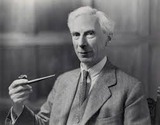
This is about Bertrand Russell.

Born to poor sharecroppers in Texas, Bessie Coleman (1892-1926) was the first African American woman aviator, earning an international aviation license from the Fédération Aéronautique Internationale. Throughout her career as a daredevil stunt pilot in thrilling airshows, she consistently defied expectations and broke through racial and gender barriers to dazzle audiences and inspire future generations of Black American pilots, aviators, and astronauts. This lesson tells the story of Coleman’s life in the wider context of the “barnstorming” early days of flight and the rising opposition to racial segregation exemplified by newspapers like the Chicago Defender.
The Woodson Center's Black History and Excellence curriculum is based on the Woodson Principles and tells the stories of Black Americans whose tenacity and resilience enabled them to overcome adversity and make invaluable contributions to our country. It also teaches character and decision-making skills that equip students to take charge of their futures. These lessons in Black American excellence are free and publicly available for all.
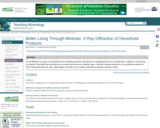
X-ray diffraction is a quick and valuable tool for identifying minerals. Minerals are an integral portion of our everyday life, in addition to composing our planet! They help bring electricity into our homes and remove our bathtub rings. In this lab, students analyze the X-ray diffraction patterns of three household cleansers, Ajax, White Magic, and Soft Scrub, in order to identify the abrasive minerals in each.
(Note: this resource was added to OER Commons as part of a batch upload of over 2,200 records. If you notice an issue with the quality of the metadata, please let us know by using the 'report' button and we will flag it for consideration.)

Assignment for Introduction to Human Communication/Linguistic Anthropology
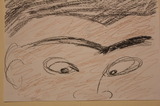
This resource aims to generate ideas and possibilities about how to advance student understanding of logic in writing beyond the notion that logic is always a collection of data points or a reference to facts. Instead of reducing logic to numbers and statements, this source hopes to introduce students and teachers to the existential questions that are always involved in the logical appeals of a text: how do we know what we know and why does it matter?

This is an essay/assignment designed for a college-level (100/200) media course focused on fake/biased news reporting.
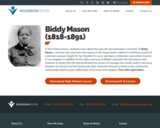
In this history lesson, students learn about the epic life and exemplary character of Biddy Mason, a woman who was born into slavery in the Deep South, walked to California as part of a pioneer caravan, fought for her freedom in court, and died a millionaire real-estate investor in Los Angeles. In addition to the highs and lows of Biddy’s dramatic life, this lesson asks students to study how she demonstrated the virtues of courage and charity, both in securing freedom for herself and her family and, later, using her fortune to invest in her community and provide relief to poor Californians of all races and religions.
The Woodson Center's Black History and Excellence curriculum is based on the Woodson Principles and tells the stories of Black Americans whose tenacity and resilience enabled them to overcome adversity and make invaluable contributions to our country. It also teaches character and decision-making skills that equip students to take charge of their futures. These lessons in Black American excellence are free and publicly available for all.

This OER Lesson plan/unit was created by Masey Ringlein as part of the 2023 World Language OER Summer work and training. Educators worked with NDE staff to create OER Learning Plans and materials. The attached Lesson Plan is designed for 9 - 12 World Language French teachers for student learning of Novice Mid Learners of French. Students will listen and comprehend a dialogue between a doctor and a patient. They will use the vocabulary from this activity to translate into French, and they will create their own dialogue in a similar style. This Lesson Plan addresses the following NDE World Language Standard(s): NE WL 1.1, 1.2, 1.3, NE WL 2.2It is expected that this Lesson Plan will take students 90 minutes to complete.
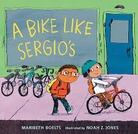
Within this collection you will find lessons, videos, handouts, and teacher guides you can use in your classroom. You will also find a brief summary of each resource with the source sited for further exploration, appropriate grade level, approximate lesson length, and learning standards.